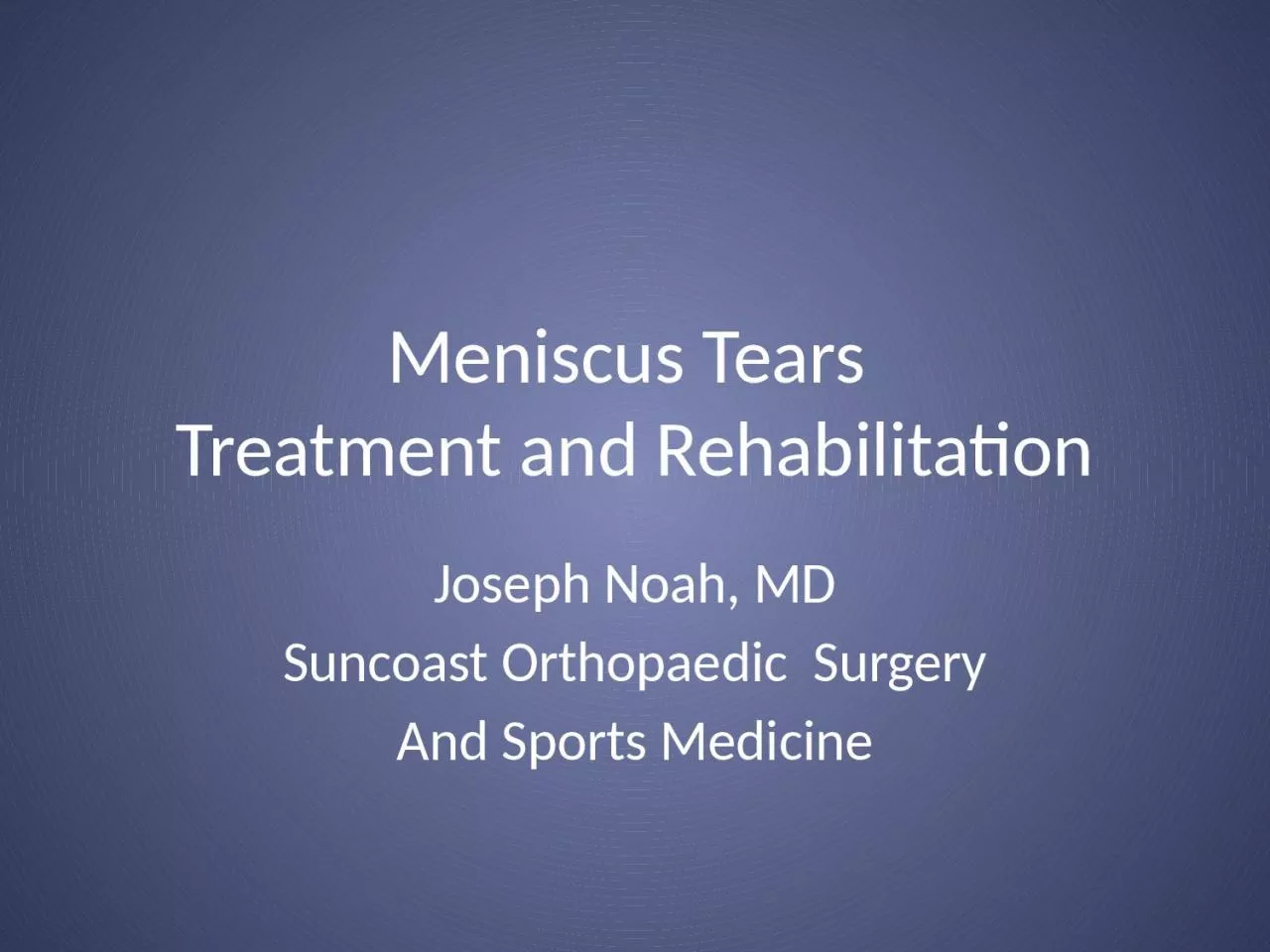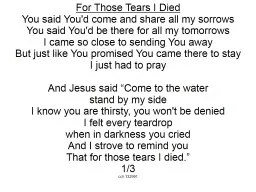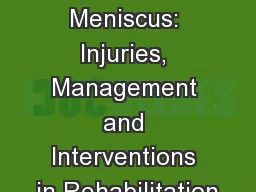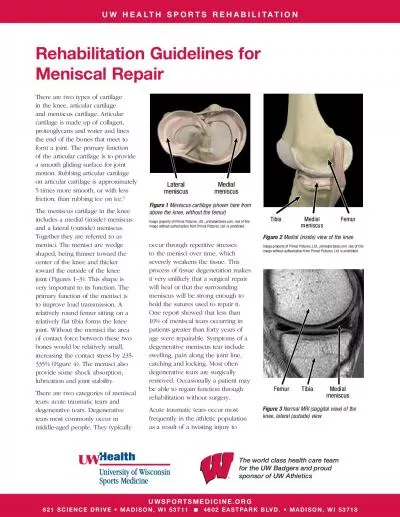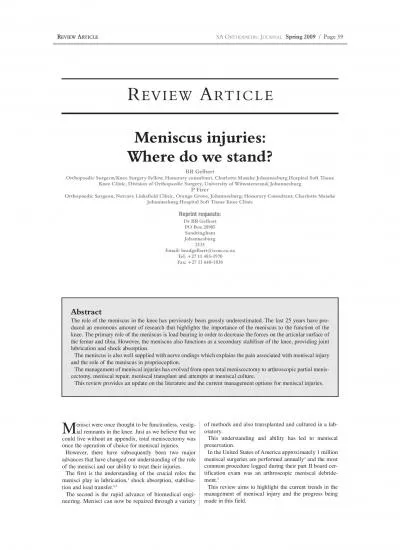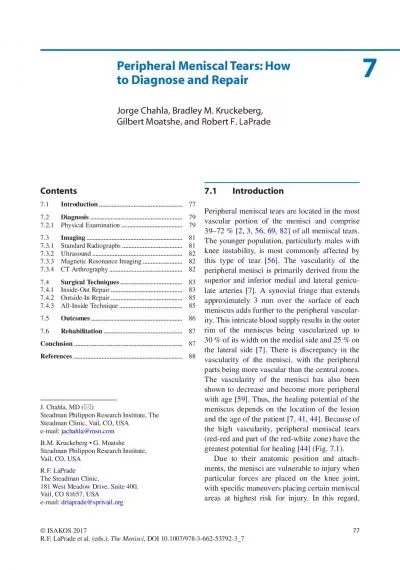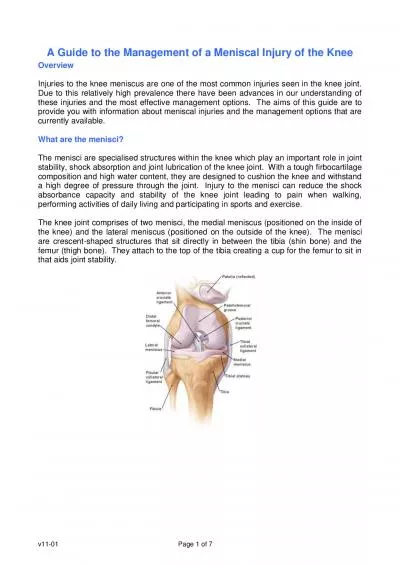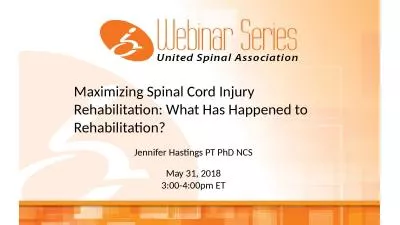PPT-Meniscus Tears Treatment and Rehabilitation
Author : josephine | Published Date : 2023-05-20
Joseph Noah MD Suncoast Orthopaedic Surgery And Sports Medicine Meniscal Anatomy Medial and Lateral Semilunar in shape Essential in distributing load and reducing
Presentation Embed Code
Download Presentation
Download Presentation The PPT/PDF document "Meniscus Tears Treatment and Rehabilita..." is the property of its rightful owner. Permission is granted to download and print the materials on this website for personal, non-commercial use only, and to display it on your personal computer provided you do not modify the materials and that you retain all copyright notices contained in the materials. By downloading content from our website, you accept the terms of this agreement.
Meniscus Tears Treatment and Rehabilitation: Transcript
Joseph Noah MD Suncoast Orthopaedic Surgery And Sports Medicine Meniscal Anatomy Medial and Lateral Semilunar in shape Essential in distributing load and reducing joint forces Act as secondary stabilizers of the knee. What is a Meniscus?. The menisci are crescent-shaped . fibrocartilaginous. discs located between the distal femoral condyles and proximal . tibial. plateau . Function of the Meniscus. Distributes stress across the joint surface by providing a larger area of contact. You said You'd come and share all my sorrows. You said You'd be there for all my tomorrows. I came so close to sending You away. But just like You promised You came there to stay. I just had to pray. Mr. Griffin. How did the Cherokees fight back against the Federal Government differently than their ancestors?. They went to Court.. Who was the President of the United States during the Indian Removal Act?. Zac Snow PT, DPT. Director of Rehabilitation. Advanced Orthopaedic Specialists powered by Incite Rehab. Fayetteville & Rogers, Arkansas. 2018 Razorback Sports Medicine Symposium. Saturday, February 24th. Bell Work. What’s your favorite social media platform to use and why?. Twitter, Instagram, Instant Messaging, Snapchat, Tumblr, etc.. Project Specifications. Working with a partner take dialog from “Tears of a Tiger” and translate it into your favorite social media platform.. Alabbadi. . after the . lec. ,,you have to know. Anatomy of knee joint. Sign and symptoms. How to examine the knee. Special tests . Diagnosis. Meniscal. problems. . Anatomy. It is the . largest and most complex . 5 UWSPORTSMEDICINE.ORG 4602 EASTPARK BLVD. • MADISON, WI 53718 Rehabilitation appointments are once every 1 to 2 weeksPrecautionsAvoid post-activity swellingAvoid posterior knee pain with end r MENISCUS TEAR OF THE KNEE What is a meniscus? The meniscus consists of tw o wedge - shaped pieces of fibro - cartilage that act as "shock absorbers" wHat Is It? the meniscus is a C-shaped piece of cartilage in the knee that cushions and acts as a shock absorber between your thigh bone (femur) and shin bone (tibia). you have both an inner (medial) BR Gelbart Orthopaedic Surgeon/Knee Surgery Fellow, Honorary consultant, Charlotte Maxeke Johannesburg Hospital Soft TissueKnee Clinic, Division of Orthopaedic Surgery, University of Witwatersrand, Jo % of all ACL tears [10, 53]. Conversely, the anterior horn of the medial meniscus is less commonly injured and, therefore, not well described in the literature. Chen et al. [ -cal techniques include o v11 - 01 Page 1 of 7 Management of a Meniscal Injury of the Knee Overview Injuries to the knee meniscus are one of the most common injuries seen in the knee joint. Due to this relatively high preva Jennifer Hastings PT PhD NCS. May 31, 2018. 3:00-4:00pm ET. Presenters. 2. Alexandra Bennewith, MPA. Vice President, Government Relations. United Spinal Association. Jennifer Hastings, PT, PhD. Board Certified Neurologic Clinical Specialist. Dr. Sonalika’s Eye Clinic provide the best Paediatric ophthalmology treatment, Paediatric eye checkup treatment in Pune, Hadapsar, Amanora, Magarpatta, Mundhwa, Kharadi Rd, Viman Nagar, Wagholi, and Wadgaon Sheri
Download Document
Here is the link to download the presentation.
"Meniscus Tears Treatment and Rehabilitation"The content belongs to its owner. You may download and print it for personal use, without modification, and keep all copyright notices. By downloading, you agree to these terms.
Related Documents

